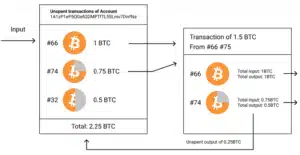What Can You Do When Refinancing a Loan With Bad Credit?

Refinancing a home loan is a great way to lower your monthly payments and get better interest rates. It’s also a way to take out extra cash at closing, which can be used for anything from paying off debt to making home improvements. As long as you have good credit and equity in your current home, refinancing can be an excellent option for homeowners looking to save money on their monthly mortgage payments or free up some cash for other uses.
Table of Contents
Improve your credit score
Your first step to getting a better mortgage is to improve your credit score. This can be done by paying all bills on time, reducing the amount of debt you have, paying off any collections or judgments, and making sure your credit report is accurate.
If you find that you have high-interest rates on other loans, such as car loans or credit cards, pay them off before refinancing so that when lenders look at your financial history, they see that you’re reliable and responsible with money.
If you are a student and want to repay a loan, consider taking student loan refinancing for bad credit with a cosigner. “The loan will show up in your cosigner’s credit report,” as stated by Lantern by SoFi.
Finally, don’t close any accounts that have a good history, as this will negatively affect your credit score.
Save up for a bigger down payment
A down payment is the amount of money you pay upfront to cover your loan. It’s typically a percentage of the total loan amount and can range anywhere from 3% to 20%. The higher your down payment, the lower your monthly payments will be because you’re paying off less principal each month. You may also qualify for better interest rates if lenders see that you’re willing to invest more in their home loans.
Conversely, a lower down payment means higher monthly payments and increased risk for you as the borrower because there isn’t much equity in your home if things go wrong with paying back the mortgage.
Be honest about your credit score
That’s all it takes to get a good idea of your credit score. If you have negative information in your credit report, make sure to explain why it’s there and how you’re planning to fix the problem.
Choose the best loan program
The first step to getting a loan with bad credit is to choose the best program. What does this mean? Paying close attention to the interest rate and other terms that come with each loan option will help you decide which one works best for your needs.
When choosing a loan program, look for one that offers lower interest rates than others on the market, but remember that many factors are involved when determining how much interest you’ll pay. For example, if two loans seem similar at first glance but have different monthly payments based on their APR (annual percentage rate), then it would make sense to go with the lower monthly payment because it means less money spent over time—and ultimately less overall debt owed!
Hopefully, this article has helped you find some solutions to your problem. The key is to first understand why you have bad credit, then correct it by following the steps they’ve outlined here.









